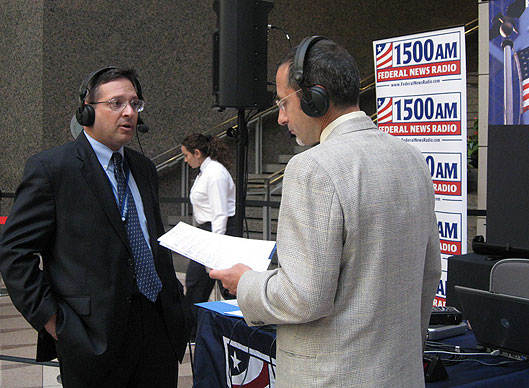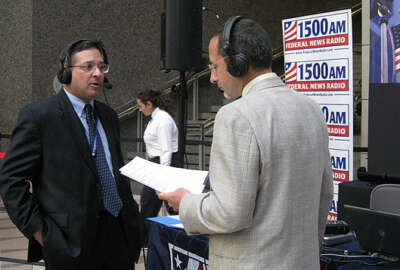
Farm Service Agency taking on 75-year geospatial data challenge
Darren Ash, the chief information officer of the Agriculture Department’s Farm Service Agency, said over the next eight years, the FSA will make 11 petabytes of...
The Agriculture Department’s Farm Service Agency has both a short and long term plan to make critical geospatial data available to farmers, state and local governments and other federal agencies.
The plan started more than seven years ago by consolidating the petabytes of imagery and data FSA has collected over years. Over the next eight years, FSA plans to digitize 75 years of imagery and make it accessible to its partners.
Darren Ash, the chief information officer of the Agriculture Department’s Farm Service Agency, said all of these efforts are part of how the agency supports the National Agriculture Imagery Program (NAIP).

“We’ve got over 65,000 canisters of specialized film still. I’ve seen it. We also are in the process of digitizing those physical records, all the stuff going back to the 1950s. What that means as we digitize, as we make that all available, we will have decades worth of geospatial information for our community, for our employees, for the organization and others to be able to see how the U.S. lands have changed. That project will be completed in about eight years,” Ash said on the Ask the CIO program. “We will have over 11 petabytes of land-based information to empower our organization, FSA and USDA, as well as other agencies to make informed program decisions. Today, what we use it for, everything supporting conservation programs, crop reporting, assessing natural disasters — it is essential to how we perform our job.”
Ash said FSA has been working on this program for several years already, but the amount of data that needs to be digitized is just huge.
“You want to make sure it’s right, it’s perfected and you have the right digital information to go with it because it’s going to be an important asset. Those physical film sides or pictures will then be transferred to National Archives and Records Administration so you have to get it right,” he said. “It is a challenge. It’s a lot of information and it’s a complex undertaking, but when we think about how geospatial analysis and information is important to us as an organization and this country, and we have to continue to improve.”
Ash said FSA works closely with the Forest Service, Natural Resource Conservation Service and other agencies to ensure they aren’t paying for and collecting information more than once.
Of course, no matter how many petabytes of geospatial information or imagery is scanned into the system, without a solid network backbone infrastructure for employees and citizens to access the data, the effort would fall short.
Ash said a big pain point for FSA has been getting bandwidth to the field offices. He said working with Rural Development and NRCS to address bandwidth issues across 2,100 county offices.
“We’ve already modernized over 1,000 and we’ve got the next wave underway. Probably most important and the saving grace for the remaining offices, we’ve recently reached agreement on the ability to fund the remaining offices. That, for our staff in the field, is a big deal,” he said. “We are going from T-1 to Ethernet so it’s really a magnitude of improvement for our employees.”
Ash said the agency is working closely with the local telecommunication providers to take advantage of the services available, but that’s not always the case and USDA made a decision to put its money behind the initiative.
Along those same lines as infrastructure improvements, FSA is addressing challenges of IT modernization more broadly.
Ash said the agency wants to get off mainframes and legacy systems, while not impacting the mission areas.
“How we move forward is going to be governed by a variety of things, not specifically focused on specific products, but capabilities, about the need to simplify and reduce complexity with our portfolio, and obviously guiding and working toward a target state,” he said. “The other thing that is important to us is not just the technology, but how we chose to do it. The leadership team has been supported of incremental. When we have the business leadership of the organization supportive of delivering capabilities and growing it slowly before you go nationwide and proving it successful are all markers for me about how we can move forward not just from a process perspective of doing it successfully and supporting the mission.”
Ash said FSA is in the early stages of using agile development. The agency has found success with several programs, but need to shift some internal processes and practices from the old waterfall approach.
Ash said all of these efforts are about preparing for the next farm bill from Congress, which will provide a host of new requirements for existing programs and new initiatives.
“What is it that we need to do between now and when the next farm bill shows up to make sure that we are ready? Typically, a farm bill is all hands on deck in terms of FSA IT and the organization in terms of responding to it. I want to make sure that we’ve got the actions that we need to put forth and the changes we need to make sure that we are ready when that farm bill shows up,” he said. “For me, it’s about things we need to do differently in changes to governance, budget, acquisition activities , software development, project and program management disciplines. When I look at our portfolio, I see a complex programs. Should we use, and obviously we should, greater use of the cloud? What about systems changes? All of those are within play. Getting new contracts in place to best support the next farm bill. And then focusing in on our people, the different skills, the training and getting additional talent on board.”
Read more Ask the CIO interviews.
Copyright © 2025 Federal News Network. All rights reserved. This website is not intended for users located within the European Economic Area.
Jason Miller is executive editor of Federal News Network and directs news coverage on the people, policy and programs of the federal government.
Follow @jmillerWFED






